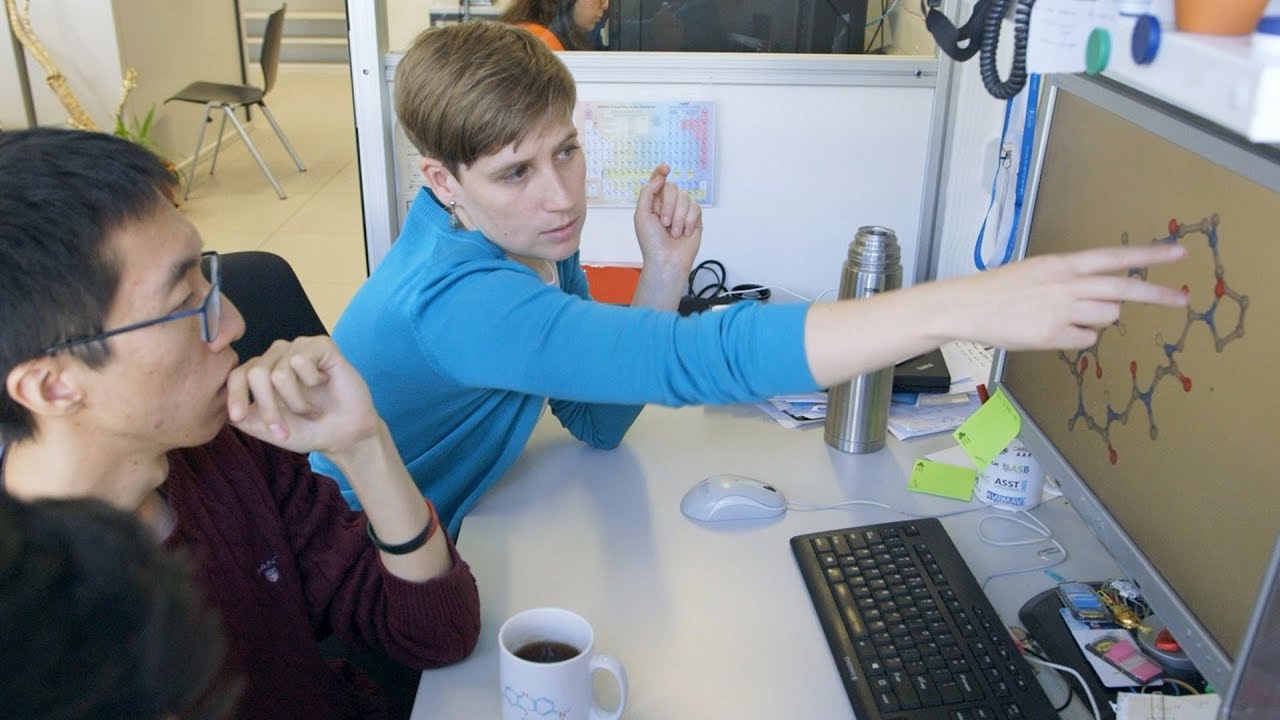The computer as a microscope for molecules vital to life
The computational chemist Sereina Riniker has won this year’s Latsis Prize awarded by ETH Zurich. She has been recognised for developing new methods for molecular dynamics simulations.

Understanding life’s smallest building blocks inevitably leads to the atoms. Cells are made of molecules, and these are made of atoms. In her research, ETH professor Sereina Riniker studies how molecules move at the atomic level, and which properties and effects the molecules have as a result. On the basis of her research results, for example, the properties of possible active ingredients for medicines can be improved.
For her work in the field of computational chemistry, Sereina Riniker has been awarded ETH Zurich's 2018 Latsis Prize, which honours excellent scientific work by ETH researchers who are younger than 40 years of age. This honour is traditionally bestowed on ETH Day. “This honour is a welcome surprise and supports my fundamental and theoretical research”, says Sereina Riniker.
How computational chemistry advances medicine
Riniker’s working group is known for its innovative approaches in studying the properties of cyclic peptides, a special group of molecules that have a cyclic structure. This class of compounds is of great interest in medicine because cyclic peptides have the potential to inhibit interactions between proteins.
One precondition for their use as an active ingredient is that they can permeate the cell membrane and thus reach the inside of the cell to produce an effect there. But it is not always possible to get through the cell membrane due to the size of the peptides. Riniker uses a computer to study why certain types of cyclic peptides can penetrate the cell membrane easier and faster than other types. The results of this research could lay the foundation for optimising new drugs.
From classical physics to supercomputers
The tribute for this year’s ETH Latsis Prize puts it this way: “As a computational chemist, Sereina Riniker develops algorithms that make it possible to follow the atomic motion of complex molecular assemblies and to extract quantitative data from them.” In addition, she has pinpointed the main problems of classical simulations, which had long hindered a chemically and physically based study of the dynamics of small biomolecules.
Riniker bases the computational modelling of the atomic movements on the laws of physical motion that Isaac Newton (1642-1726) introduced to mechanics. The necessary calculations are very complex and require the use of computer clusters.
The greatest challenges include the sheer number of the interactions and the extremely short time steps: To calculate atomic motion, the movement is divided into individual steps of which each is only a tiny femtosecond long, i.e. 0.000 000 000 000 001 or 10-15 seconds.
These steps have to be that short in order to keep calculation errors small. Accordingly, a high number of time steps needs to be calculated in order to achieve experimentally relevant time scales.
One month for one simulation
In addition to the factor of time, the number of atoms in the system determines the complexity of the calculation. Small molecules such as the cyclic peptides consist of a few hundred atoms. Large molecules like proteins comprise 10,000 to 100,000 atoms including the surrounding water. This means that more than 100 million interactions need to be calculated in each individual step for a single simulation.
Even the newest computer clusters, such as ETH’s high-performance computer or the national computation centre CSCS in Lugano, can take up to one month to calculate the simulation of the movement of one cyclic peptide over a period of one microsecond. A time frame of several microseconds is necessary to sufficiently describe the movements of one peptide.
Numerous possible changes are calculated on the computer so that out of the many possibilities, it is possible to discover how the changes influence the properties of the peptides. The results of the simulation are then confirmed experimentally in the laboratory.
Complementary results to the experiments
The computer simulation does not replace the experimental research in the laboratory, but rather it complements it: a simulation of larger molecules, for example, is based on experimental data. “Thanks to the computer methods, we have a sort of microscope that allows us to observe the molecular dynamics at an atomic level and for individual molecules. That’s not possible with other methods”, says Riniker. “We can combine the experimental results with the simulation to create a full picture.”
In order to research such complex subjects as the properties of cyclic peptides using simulations, specialised computer programs are necessary which Riniker’s working group are developing themselves.
In addition, it requires detailed knowledge from various areas of the natural sciences, which is evident from the interdisciplinary composition of Riniker’s working group, in which students, doctoral candidates and postdoctoral researchers from the fields of chemistry, physics, biology and computer science work closely together and share ideas regularly. “Research is teamwork”, concludes Sereina Riniker.
